I have been experimenting with a circuit for an induction proximity sensor, that was reverse engineered in the following post:
Help with reverse engineering a small PCB
I have built the circuit, but changed some of the values until it worked with the PCB sensing coil I was using.
As I understand it, the output of the Hartley oscillator section (far left of schematic), is biased through C3, and fed into the base of Q2. Without a metal target damping oscillation, the base voltage of Q2 is high enough for the transistor to conduct, which discharges the capacitors at the base of Q3. When a metal target is present, this reduces the peak voltage being applied to the base of Q2, which closes the transistor, allowing the capacitors at the base of Q3 to charge, increasing the base voltage. Once the Q3 base emitter voltage is high enough, current begins to flow through R6, enabling the LED and signal switching section.
The circuit works well but does suffer from temperature instability. I was expecting a small performance impact, due to the temperature effecting the Q factor of the coil, and the values of some components (capacitors were C0G rated). However, when testing from 20C to 50C, the rise in temperature would cause a large change in sensing distance.
I have not been able to locate the original part that this circuit based on, so I can't be certain of its operating temperature. However, looking at similar products (LJ18A3), these low-cost sensors have a typical operating temperature range of -25C to +55C. They are usually encased in resin, which would offer some thermal insolation, and would use a properly wound copper coil with a high Q factor, and low ESR.
Is my understanding of this circuit accurate or am I missing something? Also, would the construction and component selection of the real sensor be the primary factor in its ability to maintain sensing distance over a large temperature range, or is it the actual circuit design that is critical?
My knowledge of analogue circuit design is somewhat lacking, so apologises for any obvious blunders.
Any help would be much appreciated.

